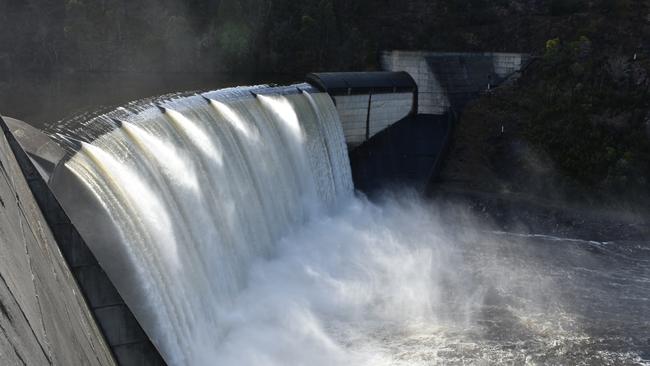Bumper rainfall brings power boost
HYDRO Tasmania is generating more power than ever, with July being one of its highest generation months on record.

Tasmania
Don't miss out on the headlines from Tasmania. Followed categories will be added to My News.
HYDRO Tasmania is generating power at near-record levels as it continues to reap the benefit of bumper July rainfall.
Water is still spilling at several locations, including Shannon Lagoon and Penstock Lagoon in the Central Plateau, and smaller-scale storages such as Dee Lagoon, Wyatinah Lagoon and Lake Repulse in the Derwent Valley chain.
Latest data from Hydro shows water storage at high levels, with many lakes less than a metre from being full.
Hydro Tasmania manager for spot market and operations, Allan Jones, said record inflows had boosted the state’s water storage and its energy-creating ability.
“We’re currently generating more power than ever,” Mr Jones said. “July, for example, was one of our highest generation months on record.
“Higher dam levels have future benefits for the state’s energy security in that we have plenty of water stored for the drier times.”
The situation is a far cry from 2015-2016, when many of the state’s lakes were low due to record low rainfall.
Hydro director of wholesale energy services, Gerard Flack, said power generated in Tasmania was being sent to Victoria by cable.
“It means we are able to export more power to the mainland via Basslink for the month. In July it was more than 260GWh, which was the most we’ve exported in a number of years,” he said.
“If we didn’t have that export capability, much of the energy would be spilt and the revenue received, and the returns, to Tasmania would not be created.”
Hydro said the overall level — known as Total Energy in Storage — peaks in the 40 per cent range during the wettest part of winter and spring, bottoming out to mid-20 per cent in the driest part of summer and into autumn.
“Our current TEIS is at 49.1 per cent. This is due to higher-than-average rainfalls,” Mr Jones said.
“At this stage, we are happy with storage levels across the board.”
Hydro lists large-scale water storages Great Lake, in the Central Plateau, at 36.5 per cent and Lake Gordon in the South West, at 44.1 per cent, which are in good range.


